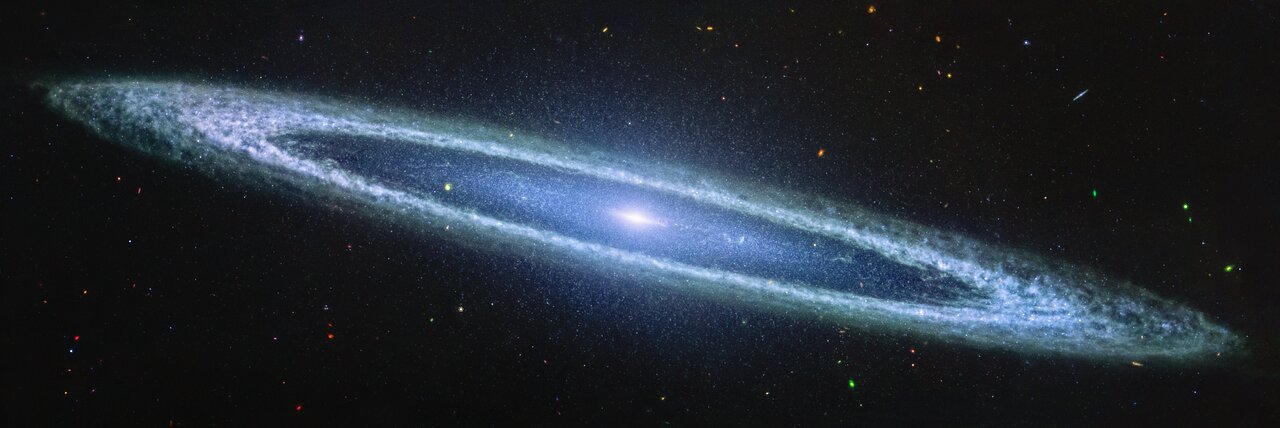Coordinates
| Position (RA): | 12 39 59.34 |
|---|---|
| Position (Dec): | -11° 37' 20.86" |
| Field of view: | 7.22 x 2.41 arcminutes |
| Orientation: | North is 12.2° right of vertical |
Colours & filters
| Band | Wavelength | Telescope |
|---|---|---|
|
Infrared
PAH | 7.7 μm | James Webb Space Telescope MIRI |
|
Infrared
PAH | 11 μm | James Webb Space Telescope MIRI |
| Infrared | 12 μm | James Webb Space Telescope MIRI |
Sombrero galaxy (MIRI)
The NASA/ESA/CSA James Webb Space Telescope recently imaged the Sombrero galaxy with its MIRI (Mid-Infrared Instrument), resolving the clumpy nature of the dust along the galaxy’s outer ring.
The mid-infrared light highlights the gas and dust that are part of star formation taking place among the Sombrero galaxy’s outer disk. The rings of the Sombrero galaxy produce less than one solar mass of stars per year, in comparison to the Milky Way’s roughly two solar masses a year. It’s not a particular hotbed of star formation.
The Sombrero galaxy is around 30 million light-years from Earth in the constellation Virgo.
[Image description: Image of a galaxy on the black background of space. The galaxy is a very oblong, blue disk that extends from left to right at an angle (from about 10 o’clock to 5 o’clock). The galaxy has a small bright core at the centre. There is an inner disk that is clearer, with speckles of stars scattered throughout. The outer disk of the galaxy is whiteish-blue, and clumpy, like clouds in the sky. There are different coloured dots, distant galaxies, speckled among the black background of space surrounding the galaxy.]
Credit:NASA, ESA, CSA, STScI
About the Image
| Id: | weic2427a | |
|---|---|---|
| Type: | Observation | |
| Release date: | 25 November 2024, 16:00 | |
| Related releases: | weic2427 | |
| Size: | 3898 x 1303 px | |




